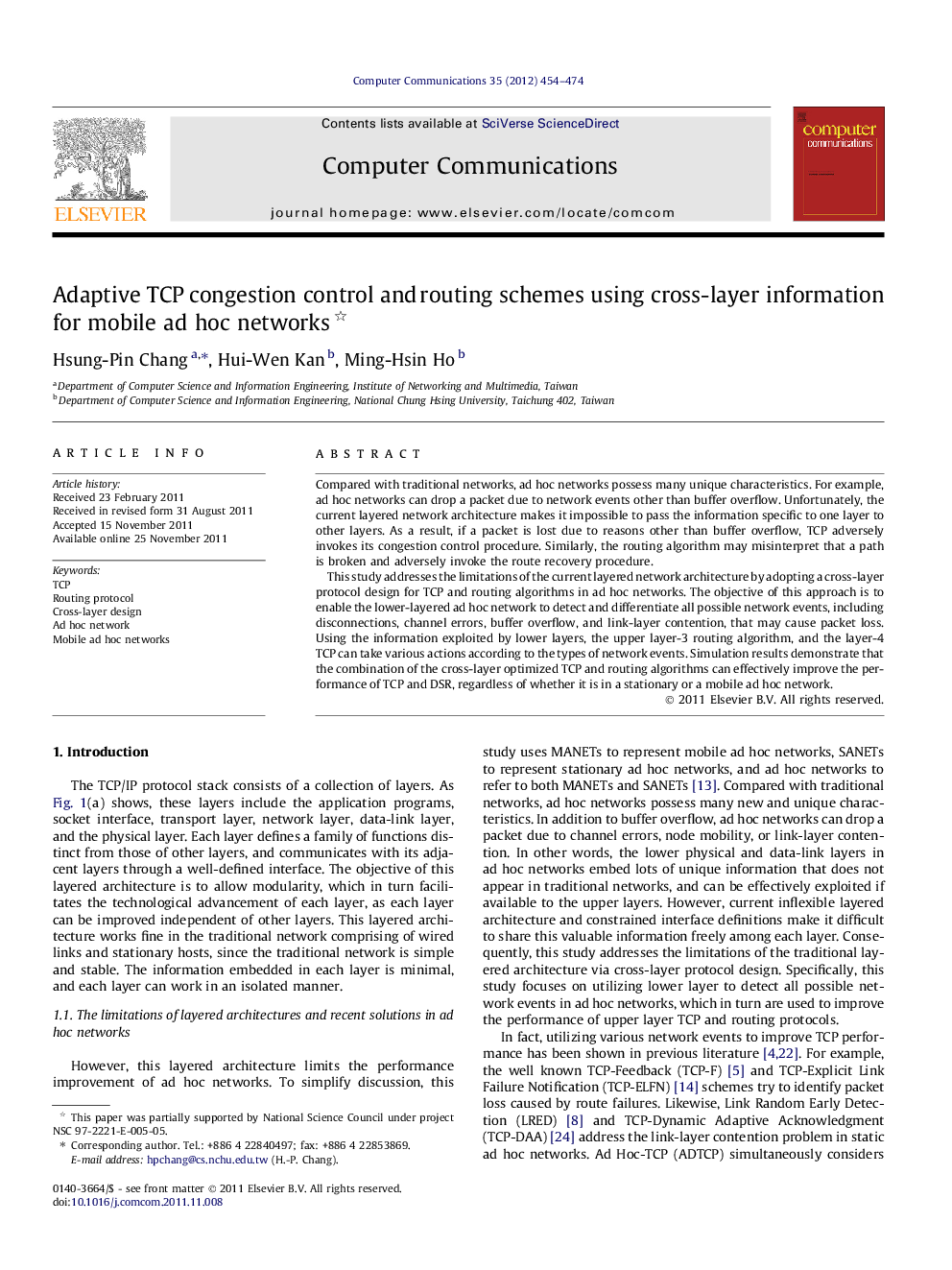| Article ID | Journal | Published Year | Pages | File Type |
|---|---|---|---|---|
| 448700 | Computer Communications | 2012 | 21 Pages |
Compared with traditional networks, ad hoc networks possess many unique characteristics. For example, ad hoc networks can drop a packet due to network events other than buffer overflow. Unfortunately, the current layered network architecture makes it impossible to pass the information specific to one layer to other layers. As a result, if a packet is lost due to reasons other than buffer overflow, TCP adversely invokes its congestion control procedure. Similarly, the routing algorithm may misinterpret that a path is broken and adversely invoke the route recovery procedure.This study addresses the limitations of the current layered network architecture by adopting a cross-layer protocol design for TCP and routing algorithms in ad hoc networks. The objective of this approach is to enable the lower-layered ad hoc network to detect and differentiate all possible network events, including disconnections, channel errors, buffer overflow, and link-layer contention, that may cause packet loss. Using the information exploited by lower layers, the upper layer-3 routing algorithm, and the layer-4 TCP can take various actions according to the types of network events. Simulation results demonstrate that the combination of the cross-layer optimized TCP and routing algorithms can effectively improve the performance of TCP and DSR, regardless of whether it is in a stationary or a mobile ad hoc network.
